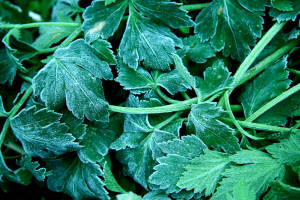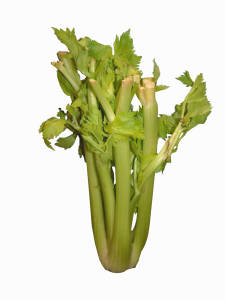Celery, interestingly, is quite a bitter plant when found in the wild. It has been bred to be less so – indeed, it is quite a mild tasting vegetable. Some types of celery require some special yet easily achievable techniques to grow properly.
Planting Celery
Celery does best in cool-ish climates. Too cold (<13° Celsius) or too warm (>25°) will make growing difficult. It can tolerate brief periods of cold, but anything longer than a week is too much. You can therefore work out the best time to plant celery in your part of the world by determining the months during which the temperature will stay between 10 and 25 degrees Celsius.
It’s advisable to sow celery seeds in seed trays as it is quite random with its pattern of sprouting. Use a seed raising mix and lightly scatter the celery seeds over it. It does not need much cover at all, so lightly ‘roughing up’ the surface will provide the required 1mm of depth. It’s fine if some sit on the surface.
Growing Celery
Be especially mindful of temperature during the germination process. Keep them inside if need be. A little sunlight is required.
Once they have sprouted a couple of leaves, its time to transplant them. This happens around 4 weeks in to the growing process. Place them in individual pots. Leave them there for another few weeks until they have grown 5 or so leaves.
Celery benefits from a hardening off period before going outside. 2 weeks should do it. Then place them outside: 8 inches (20cm) apart in rows 2-3 feet (60- 90cm) apart. They do not need to be planted deeply at all – as deep as they were in the pot will do. The garden should be rich in organic matter for transplantation to be successful, with a pH of 5.5 – 6.5. Give it a few inches of mulch.
Celery comes in both self-blanching and non self-blanching varieties. Blanching is recommended for a non-bitter taste. Blanching is most easily done by digging trenches about a foot deep (30cm) and planting the celery at the bottom of the trench. As it grows, gradually push more soil down to cover the stem. Alternatively, you can use sleeves made out of paper or old milk cartons to cover the stems. This is an especially useful technique when growing in pots. Start this technique when the celery is about a foot (30cm) tall.
Celery needs frequent watering when outside due to how shallow its roots are. It takes around 3-4 months to reach maturity. They have a late growth spurt, so don’t be too concerned if they’re still quite small at the 10 week mark.
Harvesting Celery
Celery is easily harvested: simply lift gently out of the earth using a fork. The best harvesting time is right before the heat or frost will take the temperature outside of celery’s comfort range.
They can be stored in a cool, dry place for a few weeks with no issues. To keep for longer, blanch them for two minutes, chop them up and put them in the freezer.
Threats to Celery
Bugs and slugs are common assailants of celery. Check your crop regularly.
If the soil is too alkaline, the celery can become cracked. If it is over-watered, the leaves will become brown. About two inches of water per week will suffice.
Fungus often afflicts celery late in its growth cycle, especially if the weather is wet. Use a fungicide to deal with it.


